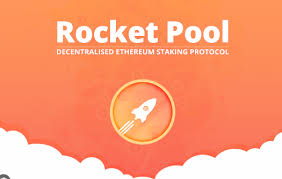
In the digital currency market, RPL tokens have gradually attracted the attention of investors. According to the latest market news, as of November 10, 2021, the price of RPL currency was US$32.9848, an increase of 2.16% today, with a 24-hour transaction volume of US$2.7125 million. The current circulating market value of RPL is US$337 million, the total supply is 18 million RPL, and the market circulation is 10.2797 million RPL. For investors who want to know more about RPL tokens, this article will give you an in-depth discussion of RPL’s currency characteristics, project features and future prospects.
Basic concept of RPL token
The RPL token is part of the RocketPool project to provide decentralized staking services for Ethereum. RocketPool allows users to use their Ethereum funds as collateral to participate in the staking process of the network to earn interest on Ethereum. The core of this project is to provide users with a simple and secure virtual currency platform so that they can earn profits in the Ethereum 2.0 ecosystem.
RocketPool project features
1. Token pledge: RPL token is a portable digital currency. Each token represents the pledge deposit and the rewards obtained in the RocketPool network. This mechanism allows users to participate in staking flexibly and can be used almost anywhere.
2. Smart contracts: All contracts of RocketPool are open source and adopt advanced design methods, allowing them to be easily and seamlessly upgraded. This transparency and flexibility provides users with greater security.
3. Smart nodes: RocketPool allows any individual, company or group to operate nodes in its network. Users can mortgage their Ethereum for free to obtain high PoS returns. This model not only lowers the threshold for participation, but also encourages more users to join the network.
4. Minimize deposit risk: In order to minimize the impact on individual users, RocketPool distributes the losses caused by bad nodes to the entire network through a social mechanism. This design effectively reduces the risk to users.
5. In terms of infrastructure, "RocketPool's network redundancy and decentralization are its core pillars. The project combines a new decentralized security mechanism and aims to solve the problems in existing technology to ensure the stability and stability of the network. Security.
6. User experience: RocketPool has undergone multiple version updates since its release at the end of 2016. Its design concept emphasizes integration with other industries so that users can get a better experience when using it.
Outlook and value of RPL token
RocketPool’s goal is to become the leader in the Ethereum 2.0 staking business. After three years of development, the project is approaching a milestone. The newly released Rocket Pool 2.0 V1 version is online on the test network, marking the maturity of its technology.
Compared with other projects such as Ankr, RocketPool has similarities in terms of staking users, node service providers and software. Users only need to enter the amount of Ethereum they wish to pledge, click Start, and the pledge can be completed after verification by the wallet. This simple operation process greatly reduces the difficulty of user participation.
During the staking process, users will receive rETH as a pledge certificate. rETH can not only be circulated and traded on the platform, but also ensure that users maintain liquidity while obtaining staking income. It is very simple for users to retrieve ETH, as long as they perform corresponding operations on the web page.
Although the specific usage scenarios of RPL tokens have not yet been announced, it is clear that node providers need to pledge a certain amount of system tokens. As an open source protocol, RocketPool provides good integration services. Users may not need to pay attention to the specific information of the service provider when using it.
future potential
The staking business space of Ethereum 2.0 is huge, and it is difficult for ordinary users to establish nodes, and node providers will be able to flex their muscles in this field. Operators can take advantage of this opportunity to improve network performance and service quality without increasing costs, thereby attracting more users to enter this market.
By providing additional services, operators can not only earn commission income, but also capture more value through the trading market created for staking Ethereum. This potential gives RPL tokens considerable room for growth in the future digital currency market.
Conclusion
To sum up, the RPL token, as part of the RocketPool project, has shown strong market potential with its decentralized staking mechanism, the flexibility of smart contracts, and user-friendly experience. With the gradual advancement of Ethereum 2.0, the value and application prospects of RPL tokens will become clearer. For investors, an in-depth understanding of RPL and the technology behind it will help to seize opportunities in this emerging market.